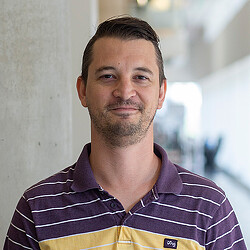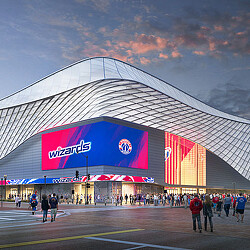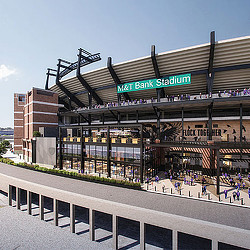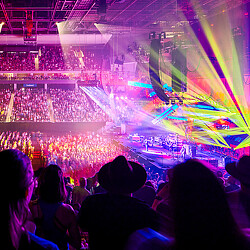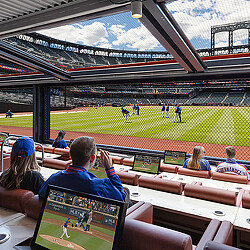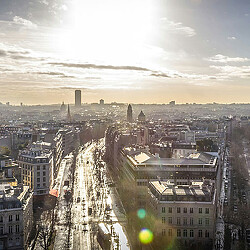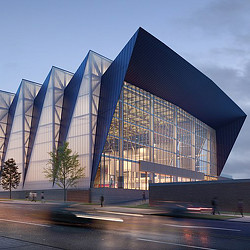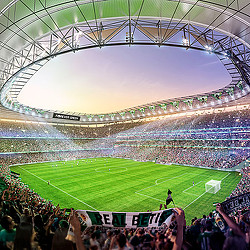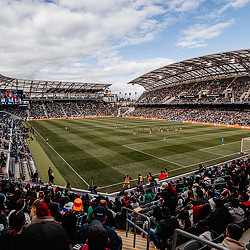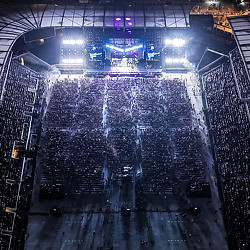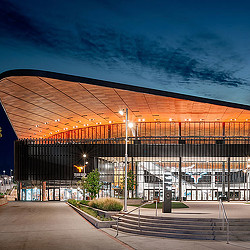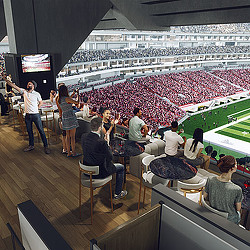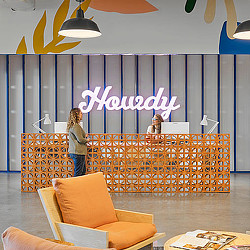Elevating the “Standing Room Only” Fan Experience in Sports Venues
In recent years, sports design focused on the premium fan experience. But how can we cater to the standing-room only (SRO) crowd and make them feel part of the venue experience?
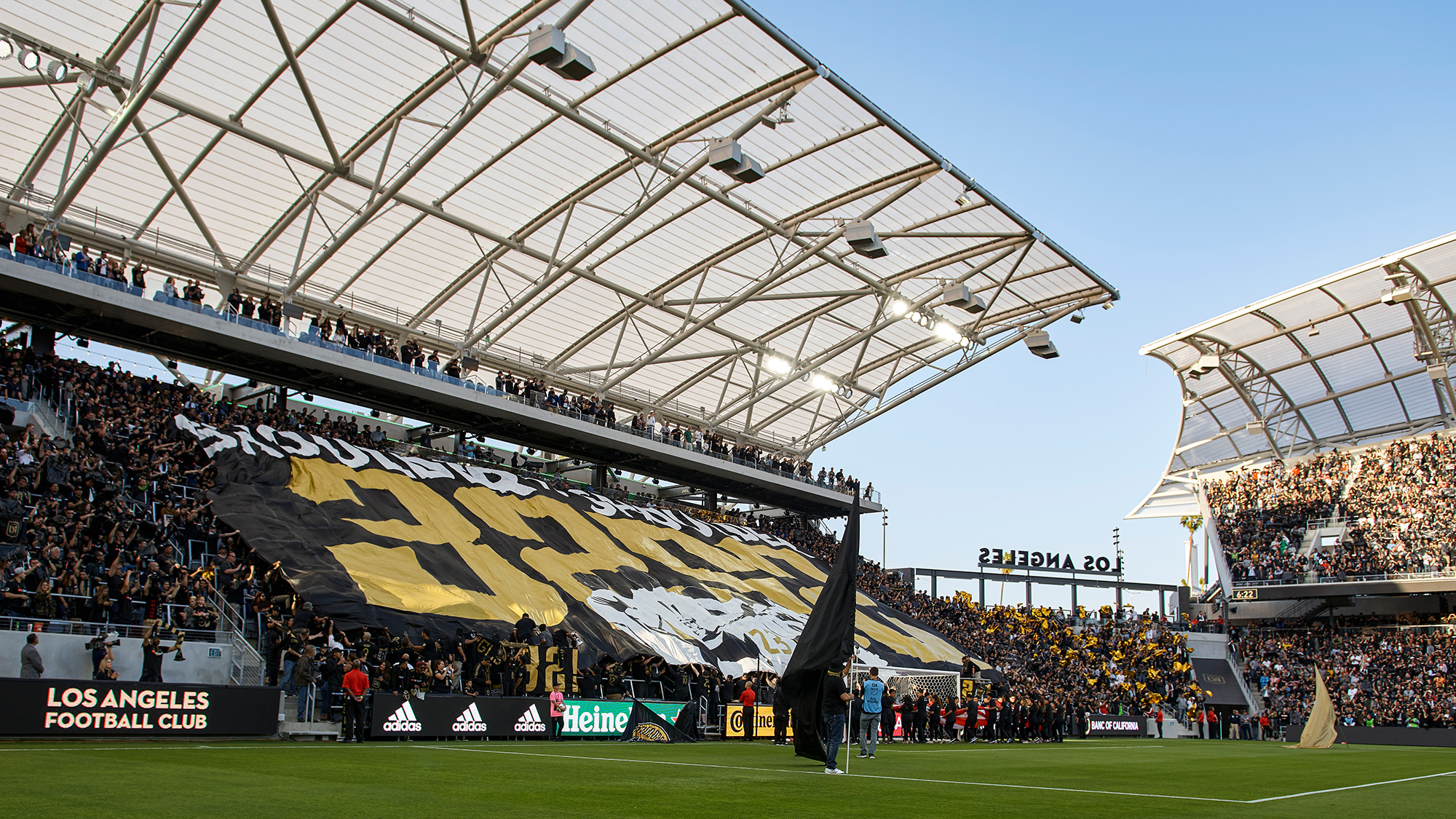
The official capacity of BMO Stadium, home of Major League Soccer’s Los Angeles Football Club (LAFC), is 22,000 but if you asked fans where they were when Laurent Ciman scored the game winner at the inaugural match, that number is closer to 40,000 when you think of those watching the match elsewhere. That is because the most powerful three words for a fan are “I was there.”
Fans come together for games because sports, at its core, is a social experience. As sports architects, we have always understood this phenomenon. It is why seating rows at venues come in an even number of seats and boxes are sold in groups. In recent years, sports design focused on the premium fan experience with hospitality-infused VIP clubs, suites, and amenities for good reason — they are major revenue drivers for owners. But we should also think about the passionate, “never miss a game” fans who flock to bars and watch parties. In other words, how can we cater to the die-hard, standing-room only (SRO) crowd and make them feel part of the venue experience?
Putting the Spotlight on SRO
Today, the SRO experience is shifting from an afterthought to boost capacity for important games to one that can drive game day and the venue experience.
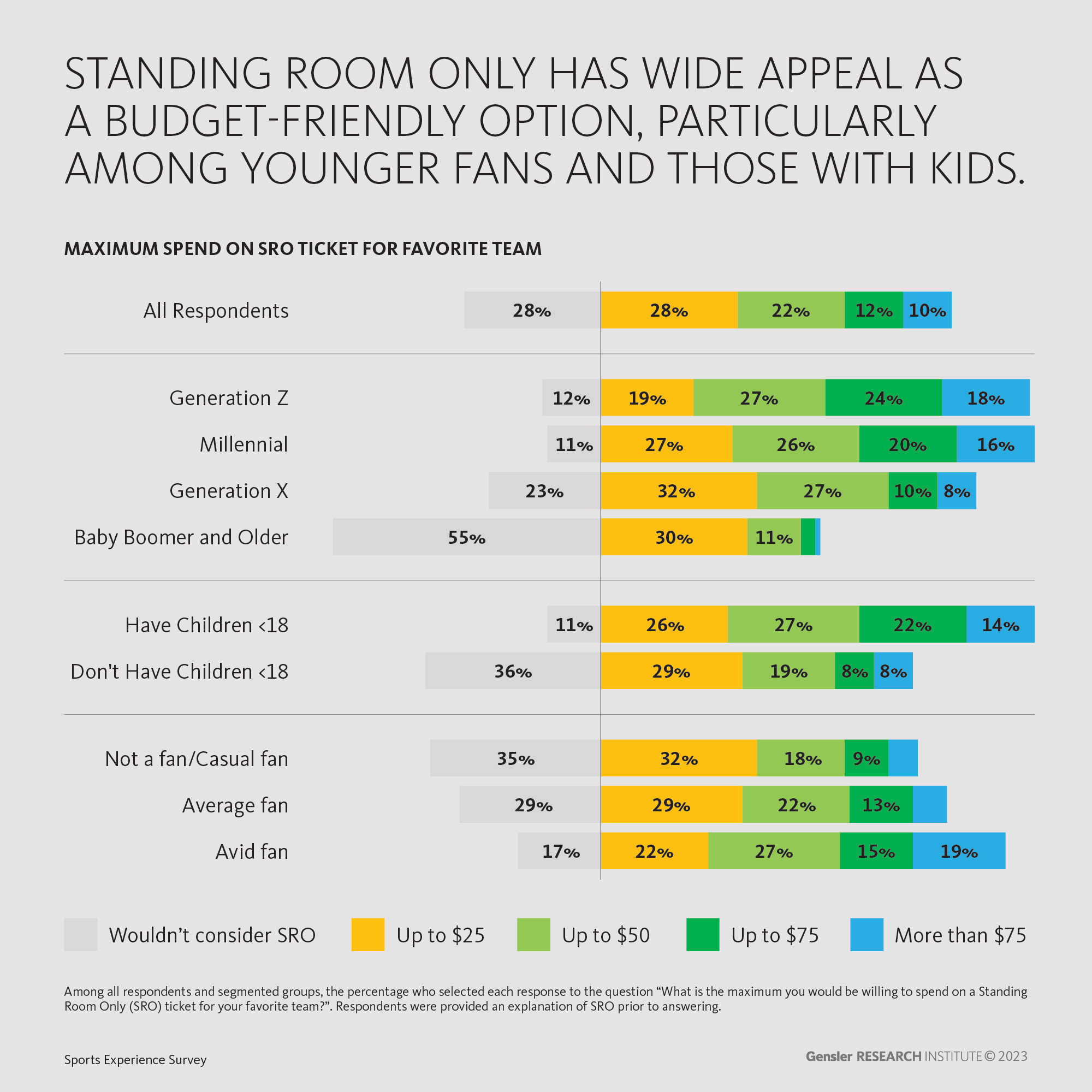
One of the main contributors to the growth of Major League Soccer (MLS) in the United States, and its recent stadium boom, is the SRO supporters’ section. Comprised of a standing rail and supporters bar, the SRO supporters’ section has become an integral part of the seating bowl, bringing energy to the players and other fans via rousing chants and songs.
MLS teams have created a strong identity in both fans and their venue experience by embracing their supporters’ sections and designing their stadiums accordingly. LAFC asked their supporters for design input on BMO Stadium, ensuring their section was a true representation of themselves and their loyalty to the team, providing them with a sense of ownership of the space. The group is called “The 3252,” a name drawn from the capacity of their section. They wanted to stand, they wanted to be close, they wanted to intimidate and affect the game. When the opposing team attempts to score, it should feel like they are not 11 vs. 11 but 11 vs. 3,252.
SRO positions gave the supporters the best avenue to do this; it maximized capacity, forced everyone to stand, and established a clear expectation. What truly sets this SRO section apart from others is its location and prominence. Traditionally, SRO sections are placed at the back of the seating bowl or in less desirable locations. At BMO Stadium and other MLS venues, the supporters’ section and SRO fans are given an entire end, starting at field level and building up.
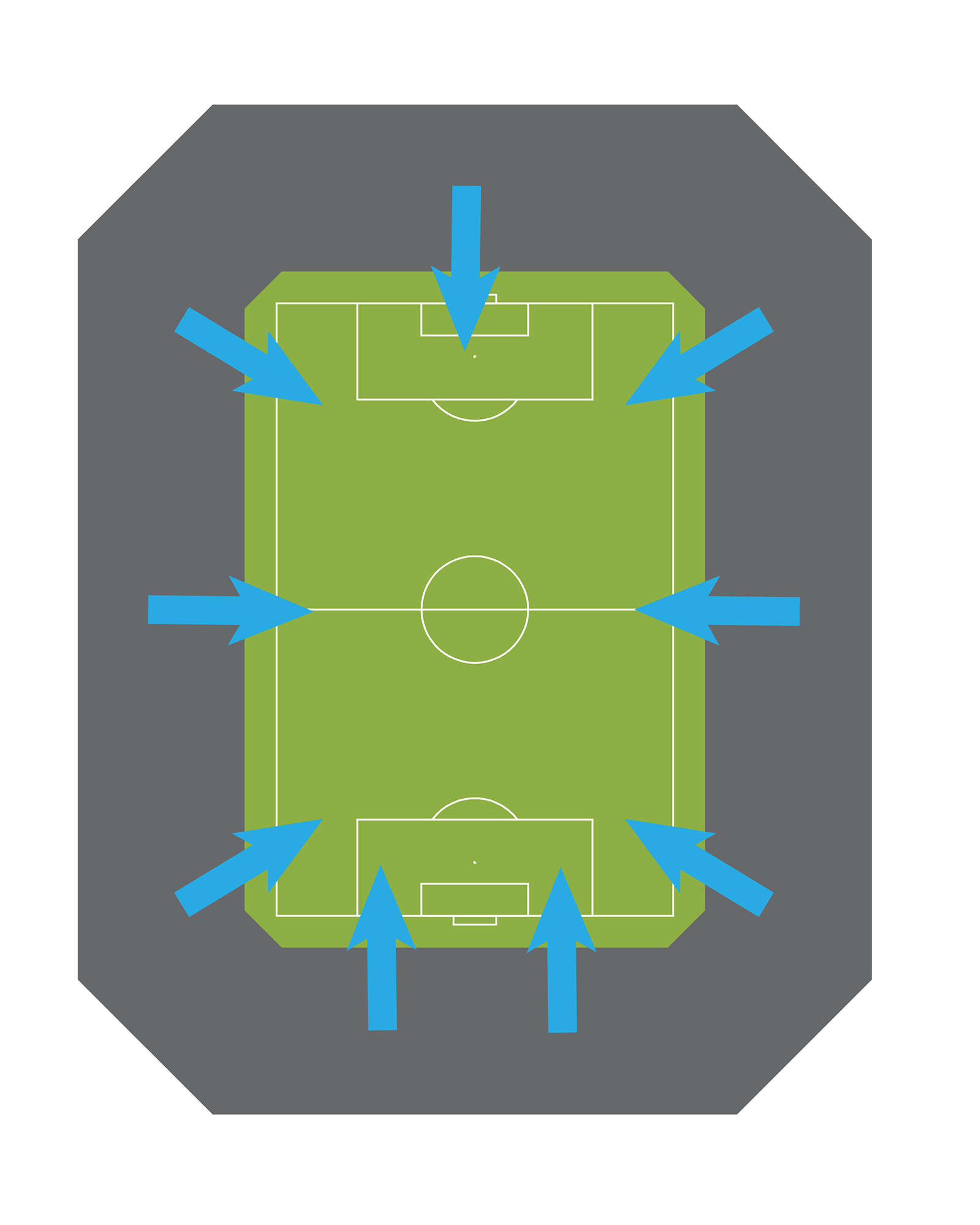
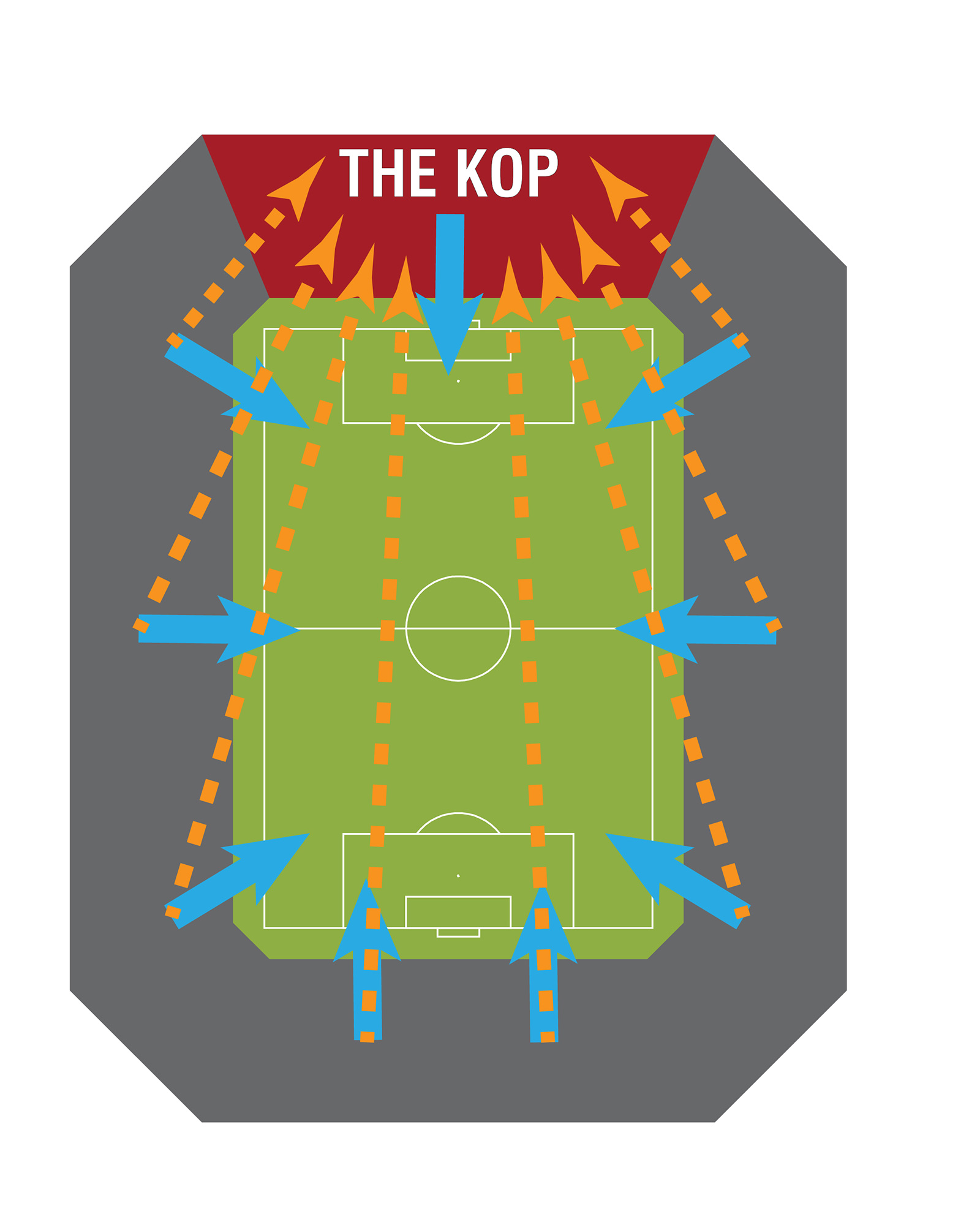
Innovating the SRO Experience
Major League Baseball (MLB) venues have long catered to the social aspect of watching sports by placing SRO spaces in the outfield. It is sometimes less about watching the game and more about providing alternate baseball experiences, such as food courts, hall of fames, kids zones, and sponsor bars. While these spaces offer additional capacity, they often lack a view to the field. Taking a cue from MLS, new social experiences with in-bowl SRO have started to populate ballparks. Gensler recently completed a small SRO deck with a bar on an elevated seating bowl in left field. What makes this application a success is that it is integrated and directly adjacent to both general admission seats and a new premium seating section. This dynamic mixture of different fan types and demographics helps improve the venue experience.
Venues in both MLS and MLB cater to an SRO experience, but other leagues should take note. For example, we are beginning to create experiential SRO decks in arenas for basketball and hockey. Historically, it has been challenging to incorporate SRO sections in arenas because real estate in such a densely packed building is at a premium. Moreover, arenas tend to be dual purpose venues hosting concerts in addition to sporting events, making it even more difficult to accommodate SRO.
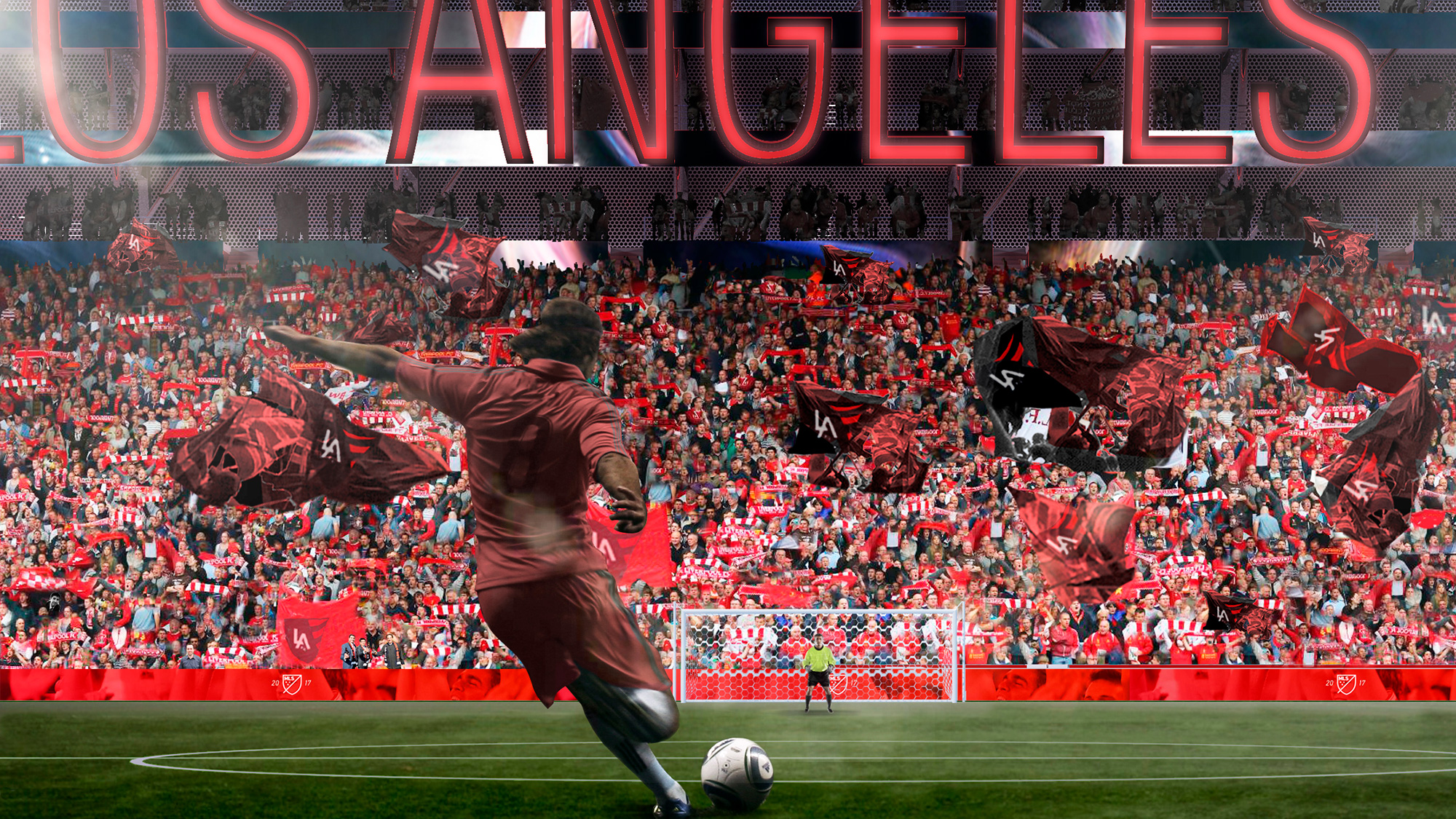
However, we know it can work. After all, the best and highest capacity concerts make use of the event floor as one large SRO experience. Duplicating the MLS approach of placing the most ardent fans behind the basket or hockey goal can create a wonderful fan experience, but that location limits the social experiences of users. Opening the seating bowl for these social experiences would create large gaps in the lower bowl that would work against the energy that SRO sections thrive on. If we elevate the decks behind the basket and hockey goals, we can take the capacity and fan passion of the MLS sections and combine it with the social aspects of the MLB that are so successful. Tiers of SRO decks that open to sponsor bars and food amenities extend the game environment into the concourse without sacrificing the fan experience in the seating bowl.
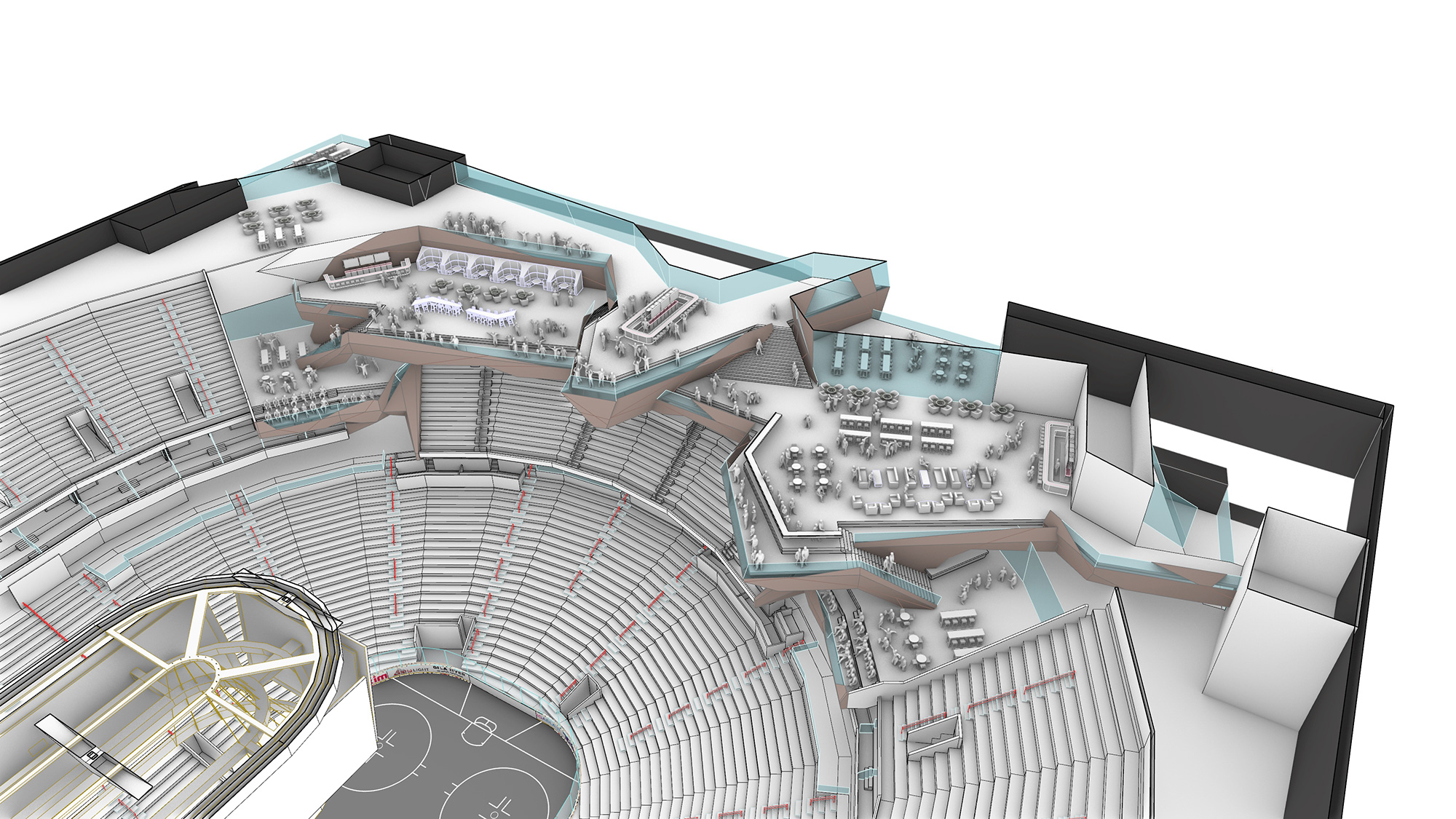
People with a variety of interests attend sporting events, each with their own motivations. SRO decks allow fans at any ticket level to participate in the game without sacrificing the social aspect of attending with family and friends. Providing a variety of experiences increases the chances for repeat visits and helps grow the fan base. Each return trip can provide a new and unique experience, even for the most seasoned fan. As venue design continues to evolve, we need to embrace these extremely adaptable and versatile products that can cater equally to every fan, from the most passionate to the most casual.
For media inquiries, email .
